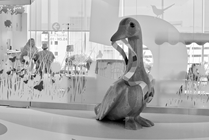Search Results
Viewing: 491-500 of 11724 | All

Condition
Rumination Syndrome
Rumination syndrome is a condition involving involuntary regurgitation of food.

Condition
H. Pylori
H. pylori, also known as Helicobacter pylori, is a bacteria that infects the stomach. Although common, this infection rarely shows any signs or symptoms.

Condition
Sleep Apnea
A sprain is an injury to a ligament, or band of tough, elastic-like tissue that connects bone to bone and holds a joint in place.
Granuloma Annulare
Granuloma annulare is a raised, bumpy ring-like rash. This starts as a smooth bump on the skin and becomes a circular ring. Granuloma annulare is common, but no one knows what causes it. It is not infectious or contagious. Granuloma annulare is often mistaken for ringworm or bug bites.
Conotruncal Anomaly Face Syndrome
Conotruncal Anomaly Face Syndrome is also known as 22q11.2 deletion syndrome.

Specialty
Muscular Dystrophy Clinic
The Muscular Dystrophy Clinic is nationally recognized for leading research and clinical care for patients with muscular dystrophy. Supported in part by the Muscular Dystrophy Association, we provide the highest level of comprehensive care to patients from across the country.
Article
Accessibility
Nationwide Children’s is committed to accessibility and strives to ensure its services are accessible to the broadest circle of people, including those with disabilities.

Specialty
Adolescent Breast Program
The Adolescent Breast Program at Nationwide Children’s Hospital is dedicated to providing comprehensive, multidisciplinary treatment for breast conditions in teenagers and young adults, including macromastia (large breasts), breast asymmetry and gynecomastia.

Specialty
Voice and Swallowing Disorder Clinic
Our clinic provides evaluation for children with voice and swallowing difficulties. We also address concerns of paradoxical vocal cord dysfunction. The collaborative team - including specialists in ENT and speech-language pathologists - works together to diagnose and treat patients.

Condition
Aortic Stenosis
Aortic stenosis is a heart condition where the valve that controls blood flow from the heart to the body is too narrow. It can be treated with surgery or catheterization.
